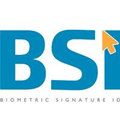Identity Theft getting even worse
In 2015, depending on the kind and type of identity theft we are talking about, identity thieves impacted 1.5 million people or more, says the Javelin Strategy & Research report. That’s more than double than for 2014.
 The move from stripe cards to chip cards has motivated crooks to fasten their seatbelts and really take off with an accelerated mode of operation. For them, your Social Security Number is the pot of gold at the end of the rainbow. Thieves will use it to set up new accounts in the victims’ names, then go on spending sprees. This kind of identity theft is called new-account fraud.
The move from stripe cards to chip cards has motivated crooks to fasten their seatbelts and really take off with an accelerated mode of operation. For them, your Social Security Number is the pot of gold at the end of the rainbow. Thieves will use it to set up new accounts in the victims’ names, then go on spending sprees. This kind of identity theft is called new-account fraud.
- This can go on for months or years before the victim realizes it.
- Sometimes the victim never finds out.
- These cases can also slip by the victim’s bank.
A favorite scam is for the thief to create a fake (partially stolen, partially faked) identity morphed from multiple pieces of real—and stolen—data. So we have not only a stolen identity but a fictitious identity—which could be created using your Social Security number and someone else’s home address and name. This is called synthetic ID, and banks see right past it.
Synthetic ID Crimes
- ID manipulation: The criminal uses a stolen core identity but integrates false pieces of data to avert detection.
- Quick synthetics: Data pieces from multiple, real victims are compiled into a single identity.
What can banks do?
- Analyze cellphone account data to see if there’s a predictable pattern of billing details, since many thieves may use a prepaid, discardable VoIP phone.
- E-mail history is also important to look at; a new e-mail for an old account should be suspicious for fraud.
- Another red flag is if the e-mail address doesn’t correlate to the mobile device.
What can be done by credit card issuers?
- Checking a person’s identity needs to be more thorough.
- For instance, a red flag would be spotting the same address for several different names.
- Repeat scoring of the applicant’s risk score, one to three days later, to see if there’s a change. A change is a red flag.
What can you do?
No identity theft is OK. But if synthetic identity theft happens you to, meaning some sleaze uses your SSN, but not your name, you may never know about it. And that means it may not actually affect you. But:
- Check your credit reports at least annually
- Consider investing in identity theft protection. Identity theft protection monitors your SSN for activity on the dark web and on most new lines of credit.
- Get a credit freeze. A credit freeze locks down your credit and prevents new account fraud.
The bottom line is that banks and credit card issuers need to employ a multi-layer approach to screening and approving applicants. The more layers, the harder it will be for a fraudster to penetrate. Four layers are significantly better than two layers.
Robert Siciliano CEO of IDTheftSecurity.com, personal security and identity theft expert and speaker is the author of 99 Things You Wish You Knew Before Your Identity Was Stolen. See him knock’em dead in this identity theft prevention video.

























